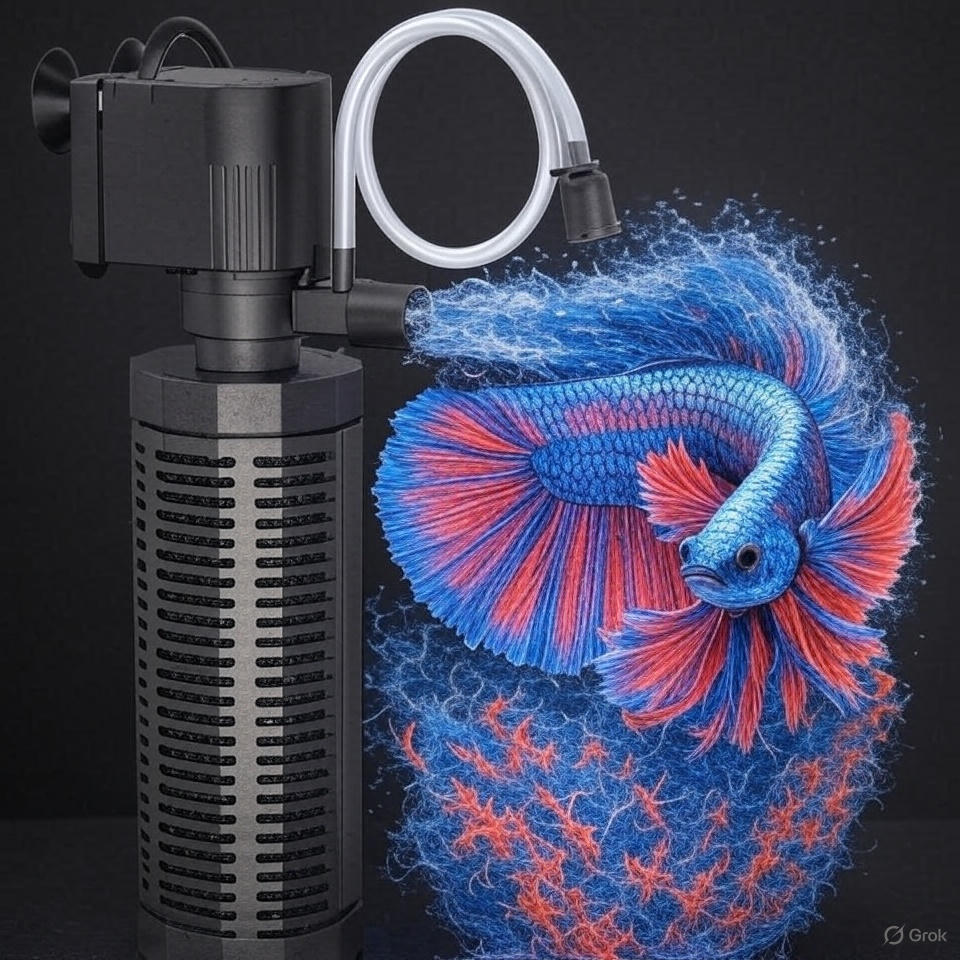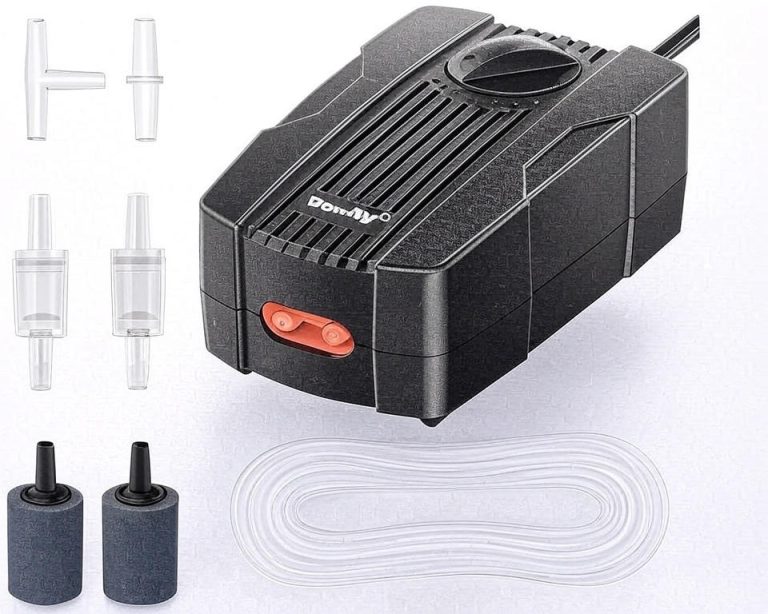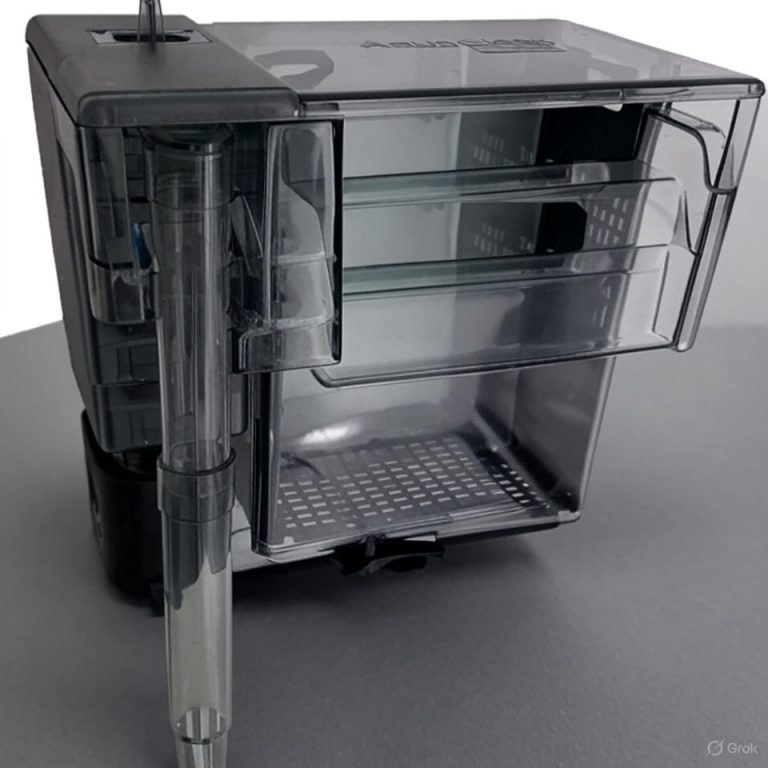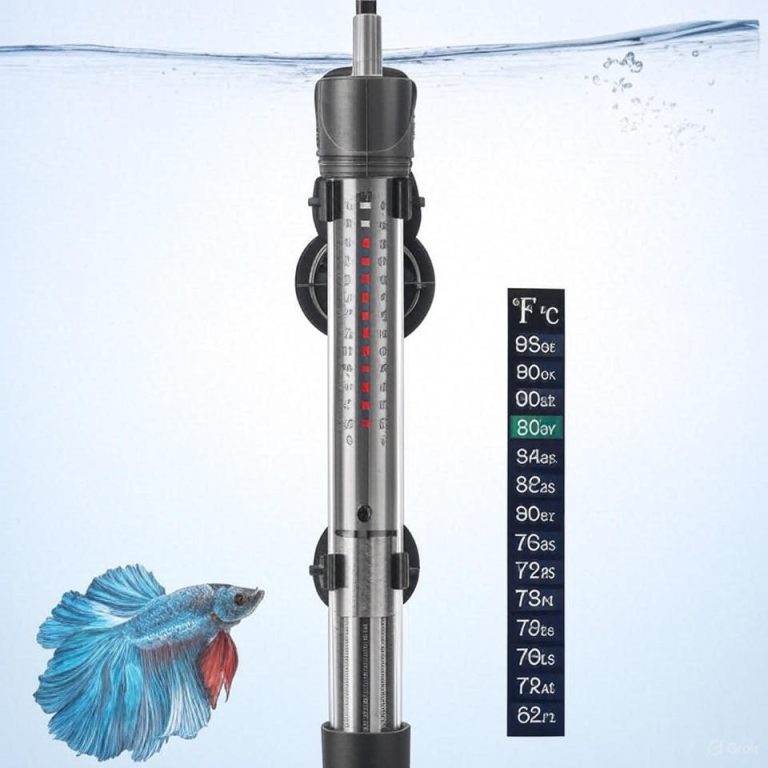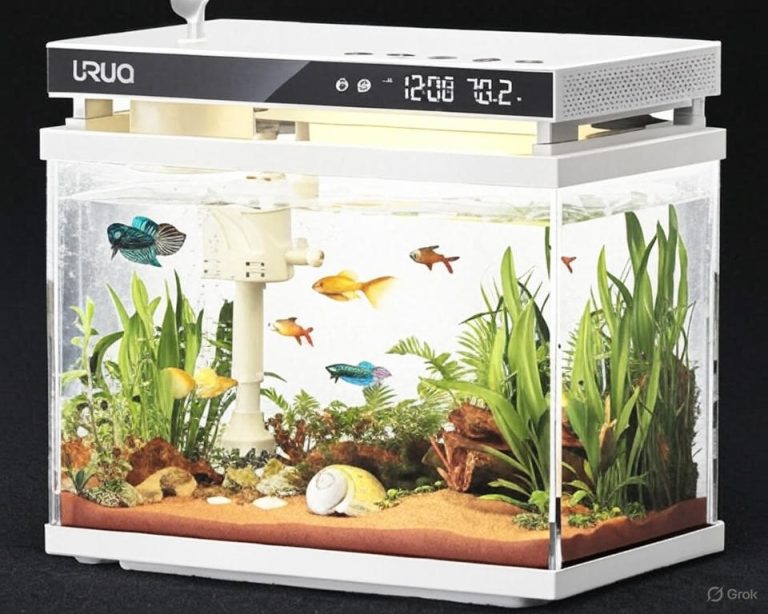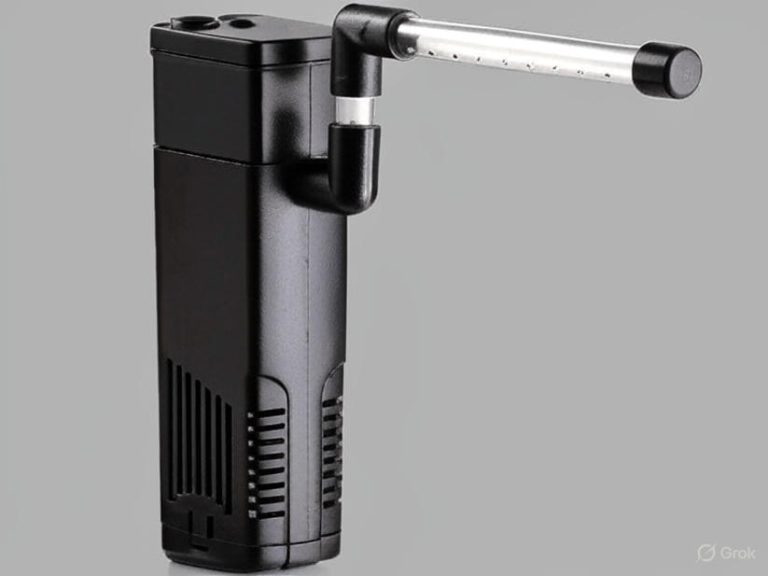5 Best 20 Gallon Fish Tank Filter In 2025
Finding the perfect filtration system for your 20-gallon aquarium can transform your fish-keeping experience from stressful to enjoyable. A well-functioning filter maintains crystal-clear water, removes harmful toxins, and creates a healthy environment where your aquatic pets can thrive. This comprehensive review examines the top five filtration systems specifically designed for 20-gallon tanks, helping you make an informed decision based on your specific needs and budget.
Why Proper Filtration Matters for 20-Gallon Aquariums
A 20-gallon aquarium represents the perfect middle ground between compact desktop tanks and large showpiece aquariums. This tank size offers enough space for diverse fish communities while remaining manageable for beginners and experienced hobbyists alike. However, this volume of water requires careful filtration management to maintain optimal water quality.
Aquarium filters provide three essential types of filtration: mechanical filtration removes physical debris and particles, biological filtration harbors beneficial bacteria that break down toxic ammonia and nitrites, and chemical filtration removes dissolved contaminants that can affect water chemistry.
The bioload in a 20-gallon tank accumulates quickly due to fish waste, uneaten food, and decomposing plant matter. Without adequate filtration, these organic compounds create dangerous spikes in ammonia and nitrite levels, potentially causing fish stress, illness, or death. A quality filter system processes these waste products continuously, converting harmful substances into less toxic compounds through natural biological processes.
Water circulation proves equally important in preventing dead zones where debris accumulates and oxygen levels drop. Proper filtration creates gentle currents that distribute heat evenly, carry nutrients to live plants, and ensure adequate gas exchange at the water surface. This circulation mimics natural aquatic environments and contributes to overall tank stability.
Essential Features to Look for in 20-Gallon Tank Filters
Flow rate stands as the most critical specification when evaluating aquarium filters. The general rule suggests filtering the entire tank volume 3-5 times per hour, meaning a 20-gallon tank requires a filter rated between 60-100 gallons per hour (GPH). This flow rate ensures adequate water processing without creating excessive current that stresses fish or disturbs planted substrates.
Noise level significantly impacts your enjoyment of the aquarium, especially in living spaces or bedrooms. Modern filter designs incorporate vibration dampening materials, quiet motor technology, and smooth impeller systems to minimize operational noise. Look for filters specifically marketed as “ultra-quiet” or “whisper-quiet” for best results.
Installation simplicity saves time and reduces frustration during setup and maintenance. Hang-on-back filters typically offer the easiest installation, requiring minimal tools and setup time. Internal filters provide excellent performance but may require more careful positioning within the tank to optimize water flow and minimize visual impact.
Maintenance requirements vary significantly between filter types and models. External filters often provide longer intervals between cleanings but require more complex maintenance procedures. Internal filters need more frequent attention but typically involve simpler cleaning processes. Consider your available time and willingness to perform regular maintenance when making your decision.
Filter media capacity determines how much biological and chemical filtration your system can provide. Larger media chambers accommodate more beneficial bacteria colonies and allow for customized filtration approaches using different media types. This flexibility proves valuable as your tank matures and your filtration needs evolve.
Top 5 Best 20 Gallon Fish Tank Filters: Detailed Reviews
1. Tetra Whisper Internal Filter 20 To 40 Gallons
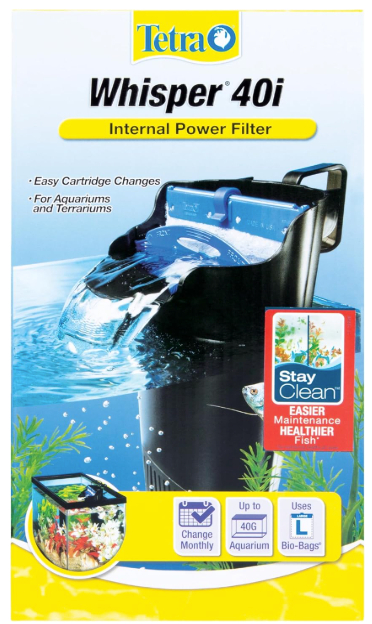
The Tetra Whisper Internal Filter combines reliable performance with whisper-quiet operation in a compact internal design. This submersible filter includes an integrated air pump that provides both filtration and aeration in one convenient unit, eliminating the need for separate equipment.
Key Features:
- Flow rate: Optimized for 20-40 gallon tanks
- Integrated air pump for dual functionality
- Ultra-quiet operation with noise-dampening technology
- Easy-to-replace cartridge system
- Compact footprint minimizes visual impact
The dual-functionality design sets this filter apart from traditional internal filters. The integrated air pump creates beneficial water movement and surface agitation while the filtration system removes debris and provides biological media space. This combination proves particularly valuable in tanks with heavy fish loads or limited equipment space.
Installation requires simple suction cup mounting inside the tank, with the airline connection extending to the surface. The filter’s compact design allows flexible positioning without overwhelming smaller tank setups. The included cartridge system simplifies maintenance, though some users prefer customizable media options for specialized filtration needs.
Performance remains consistent across the recommended tank size range, though users report optimal results in tanks closer to the 20-gallon minimum. The air pump component operates silently, creating gentle bubbles that enhance both oxygenation and visual appeal without disturbing fish or disrupting planted aquascapes.
Pros:
- Dual filtration and aeration functionality
- Exceptionally quiet operation
- Simple installation and maintenance
- Reliable performance in recommended tank sizes
- Affordable price point for integrated system
Cons:
- Limited customization options for filter media
- May require frequent cartridge replacements
- Internal placement reduces available swimming space
- Air pump functionality cannot be independently controlled
2. Marineland Penguin Bio-Wheel Power Filter 150 GPH
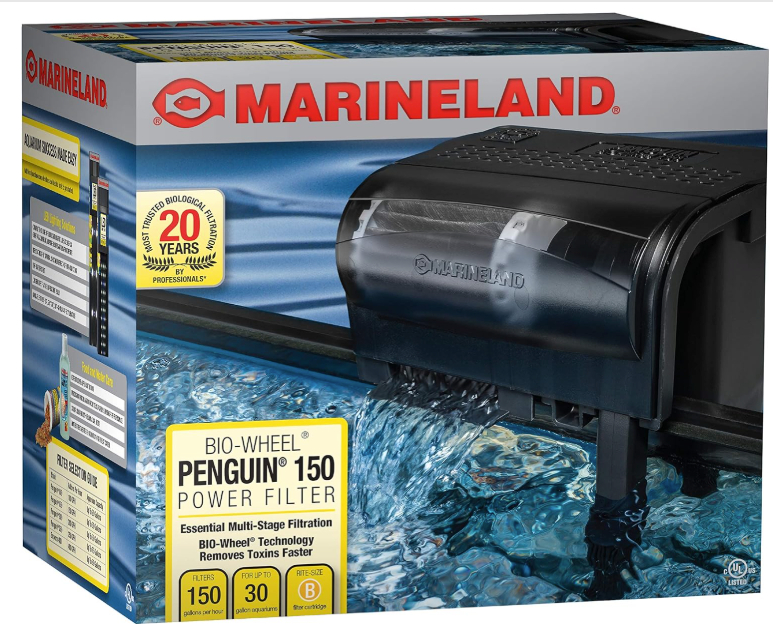
The Marineland Penguin Bio-Wheel represents a time-tested approach to aquarium filtration, featuring the innovative Bio-Wheel technology that maximizes biological filtration efficiency. This hang-on-back filter provides 150 GPH flow rate, making it well-suited for 20-30 gallon aquariums with moderate to heavy bioloads.
Key Features:
- 150 GPH flow rate for thorough water processing
- Patented Bio-Wheel technology for enhanced biological filtration
- Multi-stage filtration system
- Easy cartridge replacement system
- Proven reliability with widespread user base
The Bio-Wheel technology distinguishes this filter from conventional hang-on-back designs. The rotating wheel provides additional surface area for beneficial bacteria while ensuring constant exposure to both water and air. This unique approach accelerates the nitrogen cycle and maintains stable biological filtration even during maintenance periods.
The multi-stage filtration process begins with mechanical filtration through replaceable cartridges, followed by biological processing in the Bio-Wheel chamber. The system accommodates additional chemical media when needed, providing flexibility for specific water chemistry requirements or medication treatments.
Installation follows standard hang-on-back procedures, with the unit mounting securely on the tank rim. The priming process requires manual water addition to initiate flow, which some users find less convenient than self-priming designs. Once operational, the filter runs reliably with minimal intervention required.
The 150 GPH flow rate provides excellent turnover for 20-gallon tanks while remaining gentle enough for most fish species. The adjustable flow control allows fine-tuning based on specific tank requirements and fish preferences. This adaptability proves valuable as tank populations and setups evolve over time.
Pros:
- Proven Bio-Wheel technology enhances biological filtration
- Reliable performance with long-term durability
- Adjustable flow rate for customization
- Multi-stage filtration accommodates various media types
- Widely available replacement parts and media
Cons:
- Requires manual priming during startup
- Bio-Wheel requires occasional cleaning to maintain efficiency
- Cartridge system may increase long-term operating costs
- Some noise from water return during operation
3. Aqua-Tech Ultra Quiet Power Filter
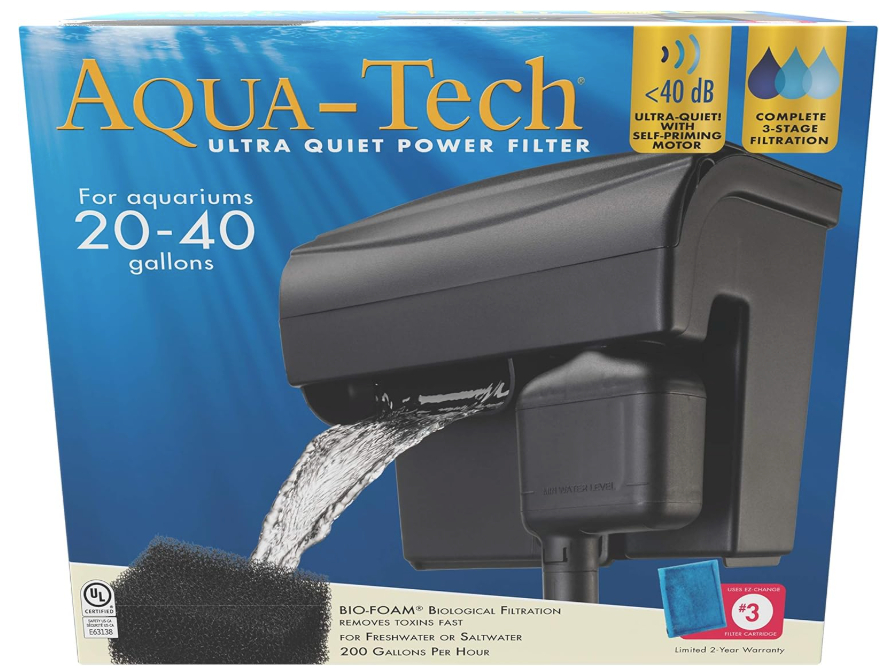
The Aqua-Tech Ultra Quiet Power Filter targets budget-conscious aquarists who refuse to compromise on performance quality. This hang-on-back filter incorporates noise-reduction technology and efficient filtration in an affordable package suitable for 20-40 gallon aquariums.
Key Features:
- Ultra-quiet operation with specialized motor design
- Multi-stage filtration with customizable media options
- Self-priming design for easy startup
- Adjustable flow control
- Budget-friendly pricing without sacrificing quality
The noise-reduction engineering focuses on vibration isolation and smooth water flow patterns. The motor housing includes dampening materials that minimize operational sound transmission, while the water return system reduces splashing and gurgling noises. This attention to quiet operation makes the filter suitable for bedroom or living room installations.
The filtration system utilizes replaceable cartridges for convenience while accommodating custom media arrangements for experienced users. The spacious media chamber allows stacking different filtration materials to address specific water quality challenges or fish requirements.
Self-priming capability eliminates the frustration of manual startup procedures. The filter automatically begins operation when plugged in, drawing water through the system without requiring additional water addition or pump priming. This feature proves particularly valuable during power outages or routine maintenance activities.
Flow adjustment allows optimization for different tank setups and fish species. The control mechanism provides smooth adjustment across the flow range without creating mechanical stress or operational instability. This reliability ensures consistent performance across various operating conditions.
Pros:
- Excellent noise reduction for quiet operation
- Self-priming design simplifies startup
- Customizable media options for flexibility
- Reliable performance at budget-friendly price
- Adjustable flow control for optimization
Cons:
- Build quality may not match premium alternatives
- Limited warranty coverage compared to established brands
- Replacement parts availability varies by region
- May require more frequent maintenance than premium options
4. 20 Gallon Fish Tank Filter up to 55 Gallons (Ultra-Quiet Submersible)
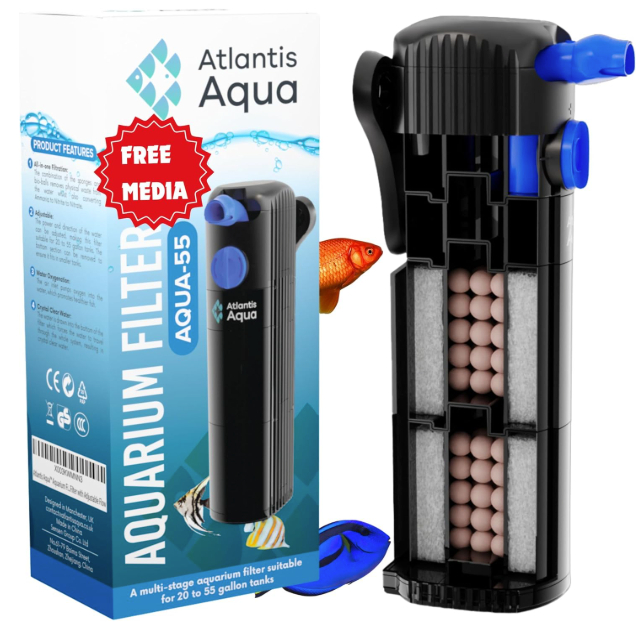
This submersible aquarium filter offers powerful performance in a compact internal design, providing crystal-clear water filtration for tanks ranging from 20 to 55 gallons. The unit combines mechanical, biological, and chemical filtration stages while maintaining ultra-quiet operation that won’t disturb your aquatic environment.
Key Features:
- High-capacity filtration suitable for tanks up to 55 gallons
- Ultra-quiet submersible operation
- Multi-stage filtration system
- Powerful pump with reliable performance
- Versatile installation options within tank
The oversized capacity provides excellent safety margin for 20-gallon tanks, ensuring adequate filtration even with heavy bioloads or messy fish species. This extra capacity proves valuable when tanks become established and fish populations grow over time.
The submersible design allows flexible positioning within the tank for optimal water circulation patterns. The unit can be placed vertically or horizontally depending on tank layout and aesthetic preferences. This adaptability makes it suitable for both traditional and unconventional aquarium setups.
The powerful pump creates strong water movement without excessive noise generation. The motor design incorporates vibration dampening and smooth impeller operation to minimize operational sound. The result provides excellent water processing with minimal disturbance to fish or aquarium environment.
Multi-stage filtration begins with mechanical removal of debris and particles, followed by biological processing through specialized media chambers. The system accommodates additional chemical filtration media when needed for specific water treatment requirements or temporary situations.
Pros:
- Oversized capacity provides excellent safety margin
- Ultra-quiet operation suitable for any room
- Flexible installation options within tank
- Powerful pump ensures thorough water processing
- Multi-stage filtration addresses all water quality needs
Cons:
- Internal placement reduces available swimming space
- May create stronger current than some fish prefer
- Requires careful positioning to optimize performance
- Potential for equipment failure affecting entire system
5. Aquarium Internal Filter for 20-50 Gallons (320GPH Biochemical Filtration)

This high-performance internal filter delivers exceptional biochemical filtration with 320 GPH processing capacity, making it suitable for heavily stocked 20-gallon tanks or standard loads in larger aquariums up to 50 gallons. The ultra-quiet operation and powerful pump combination creates an ideal balance between performance and tranquility.
Key Features:
- 320 GPH flow rate for powerful water processing
- Biochemical filtration with specialized media chambers
- Ultra-quiet operation with advanced motor technology
- Submersible design with flexible positioning
- Clear air supply system for enhanced oxygenation
The 320 GPH flow rate significantly exceeds typical requirements for 20-gallon tanks, providing exceptional water processing capability. This high flow rate proves beneficial for tanks with large fish populations, messy species, or heavy feeding schedules that create substantial bioloads.
Biochemical filtration represents the core strength of this system, with specialized media chambers designed to maximize beneficial bacteria colonization. The chamber design promotes optimal water flow through biological media while providing adequate contact time for thorough processing of ammonia and nitrites.
The advanced motor technology focuses on quiet operation without sacrificing pump performance. The engineering includes precision-balanced impellers, vibration isolation, and smooth water flow paths that minimize operational noise. This attention to quiet operation makes the filter suitable for sensitive installations.
The clear air supply system provides additional oxygenation beyond standard filtration functions. This feature proves particularly valuable in heavily stocked tanks or during warm weather when dissolved oxygen levels naturally decrease. The air supply operates independently of the main filtration system for reliability.
Submersible installation allows positioning flexibility within the tank while maintaining optimal performance. The unit can be mounted vertically against tank walls or positioned horizontally along the bottom, depending on tank layout and circulation requirements.
Pros:
- Powerful 320 GPH flow rate handles heavy bioloads
- Specialized biochemical filtration for superior water quality
- Ultra-quiet operation with advanced motor technology
- Independent air supply system enhances oxygenation
- Flexible installation options for optimal positioning
Cons:
- High flow rate may create excessive current for some fish
- Internal placement requires careful integration with aquascape
- Power consumption higher than lower-capacity alternatives
- May require flow adjustment for smaller tank applications
Installation and Setup Guide
Proper installation ensures optimal filter performance and longevity while minimizing potential problems during operation. The installation process varies between hang-on-back and internal filter designs, but several universal principles apply to all filtration systems.
Hang-on-Back Filter Installation:
Begin by assembling the filter according to manufacturer instructions, ensuring all components fit securely without forcing connections. Install filter media in the correct sequence, typically starting with coarse mechanical media followed by biological and chemical media as applicable.
Position the filter on the aquarium rim, ensuring the intake tube reaches the desired depth while maintaining adequate clearance from substrate and decorations. The water return should direct flow across the tank surface to promote gas exchange and eliminate dead zones.
Connect the power cord to a reliable electrical source, preferably using an aquarium-specific power strip with built-in safety features. Ensure the cord includes sufficient slack to prevent tension during routine maintenance activities.
Prime the filter system according to manufacturer recommendations. Self-priming filters require only electrical connection, while manual systems need water addition to initiate flow. Monitor the startup process to ensure proper operation and adequate flow rate.
Internal Filter Installation:
Select an appropriate location within the tank that provides good water circulation without creating excessive current in resting areas. Internal filters work best when positioned to create gentle circulation patterns that reach all tank areas.
Secure the filter using provided suction cups or mounting brackets, ensuring stable attachment that won’t shift during operation. Position the unit to allow easy access for maintenance while minimizing visual impact on the aquarium display.
Connect air lines and electrical connections according to manufacturer specifications. Route cables and lines to minimize visual impact while ensuring safe, dry connections outside the aquarium environment.
Test the installation by running the filter for several hours while monitoring performance and noise levels. Make necessary adjustments to positioning or flow settings to optimize operation for your specific tank conditions.
Maintenance and Care Tips
Regular maintenance ensures reliable filter performance while extending equipment lifespan and maintaining optimal water quality. The maintenance schedule varies between filter types and tank conditions, but consistent attention prevents most common filtration problems.
Weekly Maintenance Tasks:
Inspect filter operation during regular tank maintenance, checking for proper flow rate and unusual noises that might indicate developing problems. Clean external surfaces to prevent salt creep or dust accumulation that can affect performance.
Monitor water level in hang-on-back filters, adding water as needed to maintain proper operation. Low water levels can cause air entrainment and reduced filtration efficiency, particularly in high-evaporation environments.
Check intake tubes and strainers for debris accumulation that might restrict water flow. Remove visible blockages using aquarium-safe cleaning tools, taking care not to damage delicate components.
Monthly Maintenance Tasks:
Clean or replace mechanical filter media according to manufacturer recommendations and tank conditions. Heavy bioload tanks may require more frequent media changes, while lightly stocked tanks can extend intervals.
Rinse biological media in aquarium water to remove accumulated debris without destroying beneficial bacteria colonies. Never use tap water or harsh cleaners on biological media, as this eliminates the bacteria essential for nitrogen cycle processing.
Inspect pump impellers and chambers for wear or damage that might affect performance. Clean impeller assemblies using soft brushes and aquarium water, removing any debris or growth that impedes smooth operation.
Quarterly Maintenance Tasks:
Perform complete filter disassembly and cleaning, replacing worn components and inspecting all seals and connections. This thorough maintenance prevents gradual performance degradation and identifies potential problems before they cause failures.
Replace chemical filtration media such as activated carbon or specialized resins according to manufacturer schedules. These media types become saturated over time and lose effectiveness, potentially releasing trapped contaminants back into the aquarium.
Calibrate flow rates and adjust settings based on seasonal changes or tank population modifications. Fish growth, plant development, and seasonal temperature variations all affect optimal filtration requirements.
Troubleshooting Common Filter Problems
Even well-maintained filtration systems occasionally develop problems that require diagnosis and correction. Understanding common issues and their solutions helps maintain consistent water quality and prevents minor problems from becoming major failures.
Reduced Flow Rate:
Decreased flow typically results from clogged intake strainers, dirty filter media, or impeller problems. Begin troubleshooting by checking intake areas for debris accumulation, removing any visible blockages that restrict water entry.
Examine filter media for excessive dirt buildup that impedes water flow. Clean or replace media as appropriate, following manufacturer guidelines for frequency and procedures. Remember that some flow reduction is normal as biological media matures and develops beneficial bacteria colonies.
Inspect pump impellers for damage or debris that prevents smooth rotation. Remove impeller assemblies according to manufacturer instructions, cleaning components with soft brushes and aquarium water. Replace damaged impellers promptly to prevent further mechanical problems.
Excessive Noise:
Unusual noise often indicates air entrainment, impeller problems, or mounting issues that require attention. Check water levels in hang-on-back filters, adding water as needed to eliminate air bubbles that cause gurgling or splashing sounds.
Examine pump chambers for accumulated debris that might cause impeller imbalance or irregular rotation. Clean impeller assemblies thoroughly, ensuring smooth operation without binding or irregular movement.
Verify secure mounting and adequate vibration isolation, particularly for internal filters that transfer operational vibration directly to tank glass. Adjust positioning or add dampening materials as needed to reduce transmitted noise.
Poor Water Quality Despite Filtration:
Persistent water quality problems despite adequate filtration often indicate overfeeding, overstocking, or insufficient biological media maturation. Reduce feeding quantities and frequency to decrease organic waste input that overwhelms filtration capacity.
Test water parameters regularly to identify specific problems such as ammonia spikes, nitrite accumulation, or pH instability. Address root causes rather than symptoms to achieve lasting water quality improvements.
Consider supplemental filtration or media upgrades for tanks with exceptional bioloads or specific water chemistry requirements. Sometimes the original filter selection proves inadequate as tank conditions evolve over time.
Comparison and Buying Guide
Comparing filtration options requires balancing performance, reliability, maintenance requirements, and cost considerations specific to your tank setup and experience level. Each filter type offers distinct advantages and limitations that affect suitability for different applications.
Performance Comparison:
Flow rate specifications provide the foundation for performance comparison, but real-world effectiveness depends on media capacity, design efficiency, and installation quality. The Aquarium Internal Filter’s 320 GPH rating leads in raw processing power, while the Marineland Penguin’s Bio-Wheel technology maximizes biological efficiency.
The Tetra Whisper’s integrated air pump adds functional value beyond simple filtration, providing aeration that benefits both fish health and biological processes. This dual functionality makes it particularly attractive for tanks with limited equipment space or budget constraints.
Noise levels vary significantly between models, with internal filters generally operating more quietly than hang-on-back designs. The Aqua-Tech Ultra Quiet and submersible options prioritize silent operation for bedroom or living room installations where noise matters most.
Cost Analysis:
Initial purchase price represents only part of the total ownership cost, with ongoing media replacement and power consumption affecting long-term expenses. Cartridge-based systems like the Tetra Whisper and Marineland Penguin typically have higher ongoing costs due to proprietary media requirements.
Customizable media systems allow users to select cost-effective generic media options while maintaining filtration performance. This flexibility proves valuable for budget-conscious users or those with specific water chemistry requirements.
Power consumption varies between models, with higher-flow pumps generally requiring more electricity. Consider operational costs when comparing options, particularly for continuously-operated equipment in regions with high electricity rates.
Suitability for Different Users:
Beginner aquarists benefit from simple, reliable filters with straightforward maintenance requirements. The Tetra Whisper and Aqua-Tech options provide excellent entry-level performance without overwhelming complexity or specialized knowledge requirements.
Experienced hobbyists may prefer customizable systems that accommodate specialized media or unique tank requirements. The higher-capacity internal filters offer flexibility for advanced applications while maintaining user-friendly operation.
Budget-conscious users should consider total ownership costs including media replacement and power consumption. Sometimes higher initial investment in quality equipment reduces long-term expenses through improved reliability and lower maintenance costs.
Final Recommendations
After extensive evaluation of performance, reliability, ease of use, and value considerations, each filter in this review offers distinct advantages for different user needs and tank applications.
For beginners seeking reliable, quiet operation with minimal complexity, the Tetra Whisper Internal Filter provides excellent value with its integrated air pump functionality and straightforward maintenance requirements. This filter excels in standard 20-gallon community tanks with moderate bioloads.
Experienced aquarists managing heavily stocked tanks should consider the 320GPH Biochemical Internal Filter for its superior processing capacity and specialized biological media design. This filter handles demanding applications while maintaining quiet operation suitable for any room.
The Marineland Penguin Bio-Wheel represents the best choice for users preferring hang-on-back convenience with proven biological filtration technology. Its long-term reliability and widespread parts availability make it ideal for dedicated hobbyists seeking consistent performance.
Budget-conscious users will find exceptional value in the Aqua-Tech Ultra Quiet Power Filter, which delivers reliable performance and quiet operation at an affordable price point. This filter suits beginning aquarists or supplemental filtration applications.
The submersible 20-55 gallon filter offers excellent versatility for users with varying tank sizes or those planning future upgrades. Its oversized capacity provides safety margin while maintaining efficient operation in 20-gallon applications.
Consider your specific tank requirements, experience level, and long-term goals when making your final decision. Any of these filters will significantly improve water quality and fish health when properly installed and maintained. The key lies in matching filter capabilities to your specific needs rather than simply choosing the most powerful or least expensive option.
Success in aquarium keeping depends on consistent water quality maintenance through reliable filtration. Invest in quality equipment that matches your commitment level and tank requirements, then maintain it properly for optimal performance. Your fish will reward proper filtration with vibrant colors, active behavior, and robust health that makes the hobby truly rewarding.

